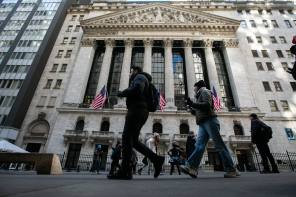
The trend to buy asset managers continues apace.
Schroder’s purchase of Cazenove Capital and Aberdeen’s of Scottish Widows Investment Partnership have been followed by the recent acquisitions of F&C Investments by BMO and Ignis Asset Management by Standard Life Investments. Rathbones also last week bought Jupiter’s private client business and part of Tilney’s private wealth business.
So what is driving this recent uptick in mergers and acquisitions (M&A) in financials and is the market overheating?
Stephen Bailey, co-manager of the Liontrust Macro Equity Income fund, says the rush of deals is being driven by the current window of opportunity to secure funding at historically low rates.
“The finance sector is likely to see further M&A in the next 12-18 months, as companies exploit the opportunity to scale their businesses, seek cost synergies and offset industry fee compression,” he claims.
Mr Bailey thinks the recent Budget changes to Isas and pensions will be catalysts for further consolidation, as insurance groups seek to offset an expected decline in annuity revenues through more flexible offerings, which may be achieved through the incorporation of fund and wealth managers.
Julian Chillingworth, chief investment officer at Rathbone Unit Trust Management, says the onset of M&A in the UK in the financial sector has been fairly recent and does not yet show signs of overheating.
“We are not in bubble territory yet, as growth is much more robust and a ‘bust’ is unlikely in the near term,” he says.
Andrew Kelly, partner & investment manager at Cartesian Capital Partners, is surprised there has not been more M&A activity. “Corporate balance sheets are generally quite strong,” he explains.
“Following meetings with many companies from various sectors in the past six months, we sense that management confidence has improved.” He says there are mixed reports about how much debt funding is available from banks, but suspects this is improving and that with healthier equity markets, there will be a more conducive climate for initiating and completing deals.
John Wyn-Evans, head of investment strategy at Investec Wealth & Investment, concurs that the increase in M&A in the financial sector is largely attributable to the rise in markets, strong balance sheets and highly valued equity.
“Greater regulatory scrutiny and pressure on costs is driving weaker fund houses to consider consolidation and private owners will be tempted to cash in at market peaks,” he says. “At the broader market level, more M&A activity tends to be a sign of greater confidence at board level, but can also reflect a lack of organic growth opportunities.”
Mr Kelly believes M&A activity is being driven by companies wishing to accelerate existing growth plans, make cost savings and enter new markets to diversify. “Most deals in the asset management space in recent times have led to upgrades for the acquirer,” Mr Kelly says.
“I wouldn’t regard them as reflecting overconfidence at present. If anything, the lack of M&A in recent years across all sectors has betrayed a lack of confidence that is only recently increasing.”
But does the current market show similarities to the lead up to previous peaks? Liontrust’s Mr Bailey thinks that in contrast to previous spikes, this episode appears fundamentally different because it is primarily debt, rather than equity, financed.
Mr Bailey says equity funding will still be viewed as a cheaper source of finance, as seen during periods of exceptionally high share price valuations, such as 1986-87.
“But we are not in such a period now,” he says. “However, central bank rates are extremely low and corporate spreads are very modest, at roughly 110 basis points (bps) – the European average, according to Barclays.”
Mr Kelly says that very large spikes in M&A, (not the current situation), can be a warning sign that businesses are struggling to achieve growth in their core businesses, or that the cost of funding is too low.
“An example of this was in 2006-07, when there really was a spike in deals, added to which sub-prime problems were being ignored,” he explains.
“Current deals would make sense even at higher costs of funding. This is very important, as costs of debt are clearly very low at the moment. We expect to see more opportunities emerging across all sectors in the next 12-18 months.”
Mr Wyn-Evans agrees that the current spike is nowhere near the 2006-07 historical highs in terms of activity, relative to overall market capitalisation.
He sees levels of confidence in the boardroom as relatively subdued compared to previous highs and that companies are not displaying signs of ‘irrational exuberance’ or rampant empire building.
As for other sectors, Mr Bailey sees the European telecommunications industry as ripe for further deal making, but suggests that not all sectors point towards consolidation. He cites the pharmaceutical industry, which is now reversing the low-risk, low-return consumer-orientated acquisitions of the past decade, as it focuses more on research and development, to allow the return of excess capital to investors in share buybacks and dividend growth.
Alex Robins, client portfolio manager at JPMorgan Asset Management, expects more consolidation in the European banking sector as harmonisation of regulations, protection schemes and resolution frameworks, will mean that stronger banks may seek to extract funding synergies out of weaker banks in the periphery.
In the tech sector, Mr Wyn-Evans questions the acquisition spree of companies like Facebook, which is buying younger companies to defend or develop its incumbent positions.
“At least these deals are being paid for in cash and shares,” he says. “It would be of far greater concern if there was a further sharp rise in M&A activity and this was funded by increasing levels of debt.”



